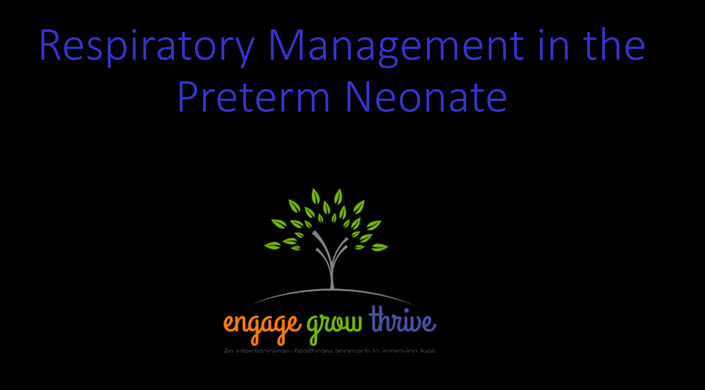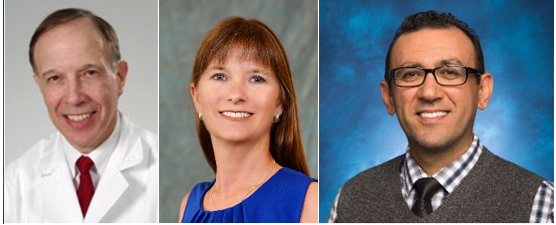
Respiratory Management of the Preterm Neonate Bundle
The pulmonary transition that must occur from fetal to neonatal life is amazing and fraught with complexities in the preterm neonate who has not fully structurally and functionally matured. An interdisciplinary team plan for the respiratory management of the preterm neonate is essential. In this Respiratory Management for the Preterm Neonate bundle, the presentations include:
- Prevention of Bronchopulmonary Dysplasia: BPD or Chronic Lung Disease is one of the most common and serious morbidities experienced by the preterm neonates and it can have devastating consequences. The complex morbidity remains elusive to widespread reduction across NICUs. QI efforts have shown success in BPD reduction and there are several randomized control trials and meta-analysis to direct our practices.
- Mechanical Ventilatory Modalities: Various modes of ventilation have been utilized in the preterm neonatal population for decades. Although the mechanism of action may differ, the primary goals are similar: provide effective gas exchange and minimize lung injury. Various modes of invasive ventilation will be presented with evidence and clinical application strategies for each.
- Respiratory Strategies to Prevent Retinopathy of Prematurity: ROP is multi factorial in pathogenesis and has significant long-term impact. One significant risk factor for the development of ROP is the administration of oxygen. Key processes in oxygen management and strategies to reduce severe ROP are presented.
- Apnea of Prematurity: Apnea of Prematurity (AOP) is one of the most common diagnoses for the preterm neonate in the NICU. This presentation includes definitions, pathogenesis, and evidence-based treatment strategies for the treatment of AOP.
Objectives:
1. Identify three contributors to the cause of BPD in the premature infant.
2. Name two evidence-based or best practice strategies to prevent BPD.
3. Describe one impact of oxygen saturation targeting on the reduction of severe ROP.
4. Discuss two ways to improve compliance with oxygen targeting in the NICU.
5. Compare and Contrast the different modes of invasive conventional mechanical ventilation for infants.
6. Discuss the differences between conventional and high frequency ventilation.
7. Describe in which disease process high frequency ventilation could potentially be of most benefit.
8. Define Apnea of Prematurity.
9. Identify two strategies to treat Apnea of Prematurity.
Total CE: 4.4
NCC Code NNP 2 or 7
NCC Code NIC 1, 2 or 7
NCC Code LRN 3 or 7
Rx = 0.75
*These presentations were included in the Small Baby Care Specialist® Program
Last updated: December, 2021
Your Instructor

The presenters for the Respiratory Management of the Preterm Neonate Bundle include two neonatologists and a neonatal nurse practitioner.
Dr. Jay P. Goldsmith has been actively involved in perinatal education and has special interests in the areas of neonatal resuscitation, ventilation of newborns, performance improvement and neonatal ethics. Dr. Goldsmith’s publications include over 100 scientific articles, 25 book chapters and 6 editions of the textbook Assisted Ventilation of the Neonate . He has been foundational in the Neonatal Resuscitation Program development and updates. He continues to actively practice as a full professor and clinical neonatologist at Tulane University.
Mindy Morris, DNP, NNP-BC, CNS, C-ELBW is an Advanced Practice neonatal clinician with an aptitude for application of evidence into practice. She co-partnered in creating a Small Baby Unit dedicated to the interdisciplinary team care of the ELBW neonate. She has a passion for neuro-protective, neuro-promotional, and family partnered care and strongly supports an interdisciplinary team-based approach to care.
Dr. Antoine Soliman is a neonatologist who is passionate about the care of extremely low birth weight premature infants. Dr Soliman helped develop The Small Baby Unit, an exciting recognized work that helped improve the outcomes of these fragile newborns. He is currently the Medical Director of the Neonatal Intensive Care Unit at Miller Children’s and Women’s Hospital in Long Beach, California.